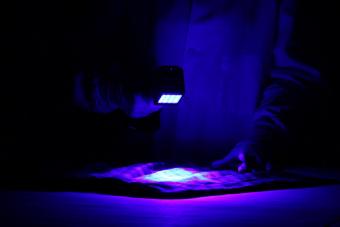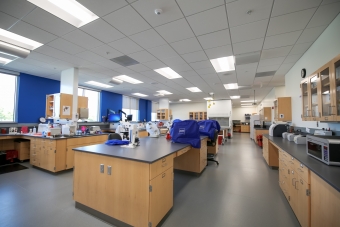NSP Crime Lab - Biology Unit
NSP Crime Lab - Biology Unit


The Forensic Biology Casework Section of the Nebraska State Patrol Crime Laboratory is responsible for examining items of evidence for any potential biological evidence and for the possible determination of the origin of the biological material.
Biological Screening Capabilities:
- Blood (presumptive and confirmatory)
- Semen (presumptive and confirmatory)
-
Saliva (presumptive only)
- Screening for the presence of male DNA (Y-Screen) in sexual assaults
- Examination of hair to evaluate the suitability for nuclear DNA testing
Human DNA Typing Capabilities:
- The analysis of Short Tandem Repeat (STR) loci using the GlobalFiler™ chemistry
- Entry of qualifying forensic DNA profiles into CODIS database to search for possible DNA matches
- Y-STR testing for male DNA in select cases using the Yfiler™ Plus chemistry
_______________________________________________
The Forensic Biology Databank Section of the Nebraska State Patrol Crime Laboratory is responsible for processing the DNA samples of qualifying convicted offenders as per the Nebraska DNA Identification Information Act and the Sex Offender Registration Act.
Human DNA Typing Capabilities:
- The analysis of Short Tandem Repeat (STR) loci using the GlobalFiler™ and GlobalFiler™ Express chemistries
- Entry of qualifying offender DNA profiles in the CODIS database to search for possible DNA matches
_______________________________________________
The Nebraska State Patrol Crime Laboratory is responsible for maintaining the integrity of the state’s DNA database. The DNA database is regulated by federal law, state law, and FBI eligibility requirements. Currently the Nebraska State Patrol Crime Laboratory is the only laboratory in Nebraska with access to the Combined DNA Index System (CODIS).
CODIS Database:
- CODIS is the FBI software that allows DNA profiles obtained from offenders, crime scene evidence, missing persons, unidentified human remains, and relatives of missing persons to be searched against each other. DNA profiles can be linked together during these routine searches, which provides law enforcement agencies with investigative leads.






